History of Veliko Tarnovo
Veliko Tarnovo is situated on three hills (Tsarevets, Trapesitsa and Sveta Gora) circled by the River Yantra and was also the ancient capital of the Second Bulgarian Empire (1187-1393). The oldest part of the city is situated around the Tsarevets Citadel, strategically built on a hilltop overlooking the city encircled by the river and accessible only by a drawbridge.
Veliko Tarnovo was founded at the foot of the Northern Fore-Balkan Range, dating back to the 4th millennium BC. Veliko Tarnovo had inherited centuries-old prehistoric, Thracian and antique culture, and in 1185 it became a center of the Bulgarian Uprising against Byzantine domination and the capital of the restored Bulgarian state. The medieval town of Ternovo was rapidly expanding and developed into the strongest Bulgarian fortress during the 12th-14th centuries. It became the most significant political, economic, cultural and religious center of Bulgaria.
During the 15th-19th centuries, Tarnovo was a symbol of the former Bulgarian state system and a stronghold of the Bulgarian national spirit. It was also a leading center of the struggle for cultural independence. During the Bulgarian National Revival period in the second half of the 18th and the 19th centuries, the town was an important administrative, trade and industrial center.
After the Liberation from Ottoman domination in 1876 until World War I, Tarnovo played a significant role in the political, administrative and cultural formation of an independent Bulgaria.
Our first port stop in Bulgaria was at the town of Ruse. It was set up in the 1st century BC as a Roman military fort and port under the name of “Sexsaginta Prista” (“Port of sixty ships”). In the end of 19th century and the beginning of 20th century, due to the wide range of economic and spiritual contacts with the countries along the Danube, Ruse turned into a beautiful city, with a distinct European aspect and traditions.
Some tour members visited Ruse while others went on to Veliko Tarnovo.
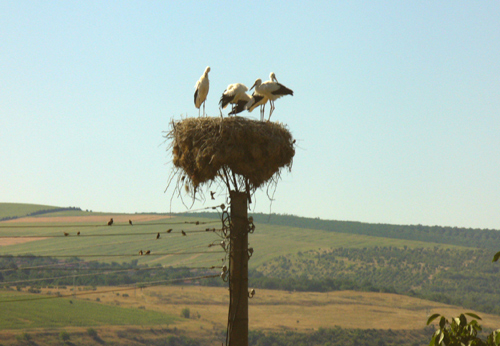 On the ride to Veliko Tarnovo, we saw some beautiful farmland as well as this nest of storks.
On the ride to Veliko Tarnovo, we saw some beautiful farmland as well as this nest of storks.
 Our first look at the town of Veliko Tarnovo was from a bridge over the river below.
Our first look at the town of Veliko Tarnovo was from a bridge over the river below.
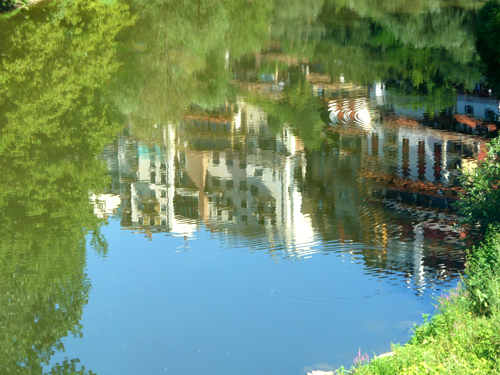 A reflection of part of the town in the river.
A reflection of part of the town in the river.
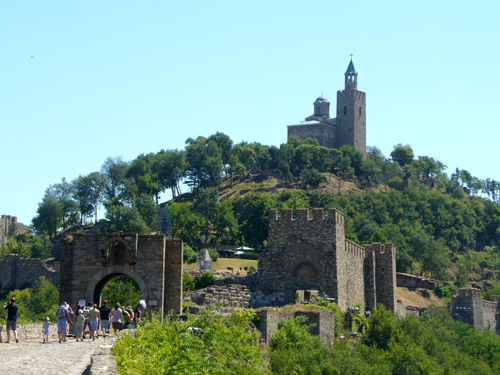 A fortress called the Tsarevets Citadel at the eastern part of the town. In the 7th-14th centuries the capital residences of the tsar and the patriarch were here. Built over a Thracian settlement and Byzantine fortress, dating back to the 4th-6th centuries, Tsarevets turned into an unapproachable fortress and capital of the Second Bulgarian Kingdom. It is surrounded by two fortified walls enforced by battle towers and flying buttresses (2.40 - 3.60 m thick). After entry at the main entrance is to the west, there are three consecutive gates, each of which is defended by a battle-tower. The rock in front of the first is cut so that a draw-bridge could be opened and then withdrawn.
A fortress called the Tsarevets Citadel at the eastern part of the town. In the 7th-14th centuries the capital residences of the tsar and the patriarch were here. Built over a Thracian settlement and Byzantine fortress, dating back to the 4th-6th centuries, Tsarevets turned into an unapproachable fortress and capital of the Second Bulgarian Kingdom. It is surrounded by two fortified walls enforced by battle towers and flying buttresses (2.40 - 3.60 m thick). After entry at the main entrance is to the west, there are three consecutive gates, each of which is defended by a battle-tower. The rock in front of the first is cut so that a draw-bridge could be opened and then withdrawn.

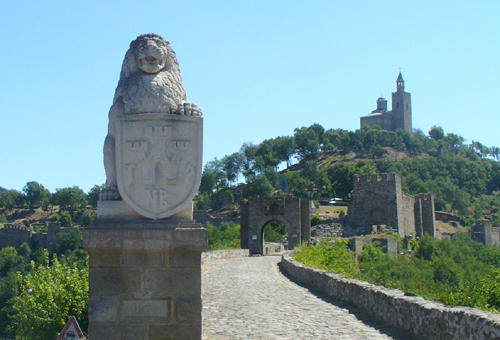 A lion guarding the gate.
A lion guarding the gate.
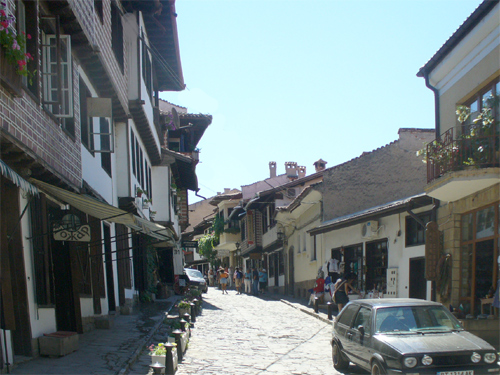 A shopping area with small workshops of potters, artists, carvers and other traditional crafts.
A shopping area with small workshops of potters, artists, carvers and other traditional crafts.

A panoramic shot from the upper level of the town.
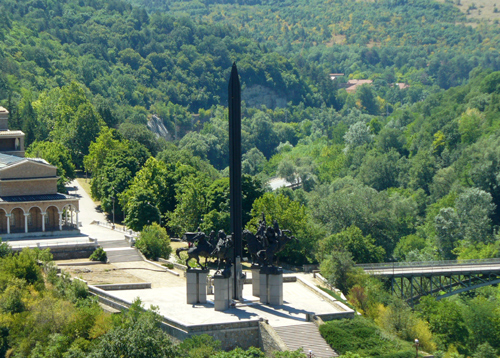 A closeup of the the monument to the rulers of the Second Bulgarian Kingdom.
A closeup of the the monument to the rulers of the Second Bulgarian Kingdom.
After the morning in Veliko Tarnovo, we rode the bus to the nearby village of Arbanasi.
